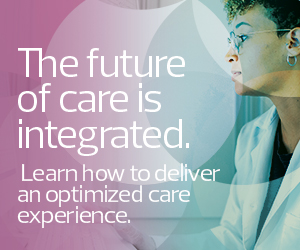Though virtual care deployments have been a major focus in healthcare for the past three years, organizations have not forgotten their ongoing journeys to transform their physical spaces too.
Modern patient rooms in hospitals are evolving to offer more consumer-oriented comforts, with amenities that wouldn’t be out of place in someone’s living room. Take Penn Medicine’s newly built pavilion at the Hospital of the University of Pennsylvania: Its patient rooms include a 75-inch smart TV that provides access to care information, entertainment, and room controls for lighting, temperature and more.
“Even before the pandemic, but especially during the pandemic, our physical infrastructure across the country has failed to change to meet 21st century healthcare challenges,” Dr. Gianrico Farrugia, president and CEO of Mayo Clinic, said during a virtual keynote address at HIMSS22. “This physical transformation I believe has been severely neglected, and it’s going to need significant national attention and investment over the next few years.”
Click the banner to discover how health IT solutions can help create an integrated care experience.
Clinicians are also benefiting from these updated physical spaces, which can better support the transition from virtual to in-person care. Amid staffing and financial constraints, smart hospital solutions that can automate routine or administrative tasks and create touchless opportunities for bedside clinicians will move health systems toward a more integrated and seamless approach to better patient care.
As patients and clinicians expect more connectivity, from streaming capabilities to clinical mobility, hospital rooms are transforming to meet those demands. Healthcare organizations, however, should not feel overwhelmed about starting from scratch; instead, they can strategize with an interdisciplinary team and leverage the tools already available to them.
Smart Hospital Transformation Requires Teamwork
A smart hospital is essentially a hospital that is able to use real-time data to make the best decisions, supported by automated capabilities that free up staff from laborious manual input and nurturing a wider reach of care beyond hospital walls.
Consider the Patient Room ‘Next’ framework, which has five main goals around integration, real-time data knowledge, automated documentation, touchless technology and flexible spaces.
To work toward this approach, an interdisciplinary team of stakeholders is a crucial part of the rollout process. An interdisciplinary team is more likely to foster full adoption and usage of smart hospital solutions, so bringing in stakeholders from bedside clinicians to the IT department is critical from the start.
Such a team is also necessary to keep security and privacy concerns at the forefront alongside goals of improved staffing, budgeting and workflow efficiencies. As care moves outside hospital walls, data security is paramount. Also, since a number of smart hospital solutions involve video and audio components, patient privacy needs to be considered alongside their safety.
Take Control of Your Transformation Journey
Healthcare organizations will continue to have a heavy focus on data, with ongoing journeys to the cloud to support modernization. The next level of change will be pulling all of that data together and using it in the best way possible to reduce clinical cognitive load and to augment insight for clinical decision support.
Hospitals do not have to rip and replace the solutions they already have. They can leverage their existing tools their fullest extent — this will require implementing a framework of optimized solutions to help achieve an organization’s desired outcome.
Patient Room ‘Next’ is not about inputting the latest, shiniest technology but about building a roadmap toward a desired outcome that will ultimately improve patient care. As long as a healthcare organization has a strong foundation in its core IT technologies, it’s very possible to start implementing those without disrupting current operations.
This article is part of HealthTech’s MonITor blog series.













